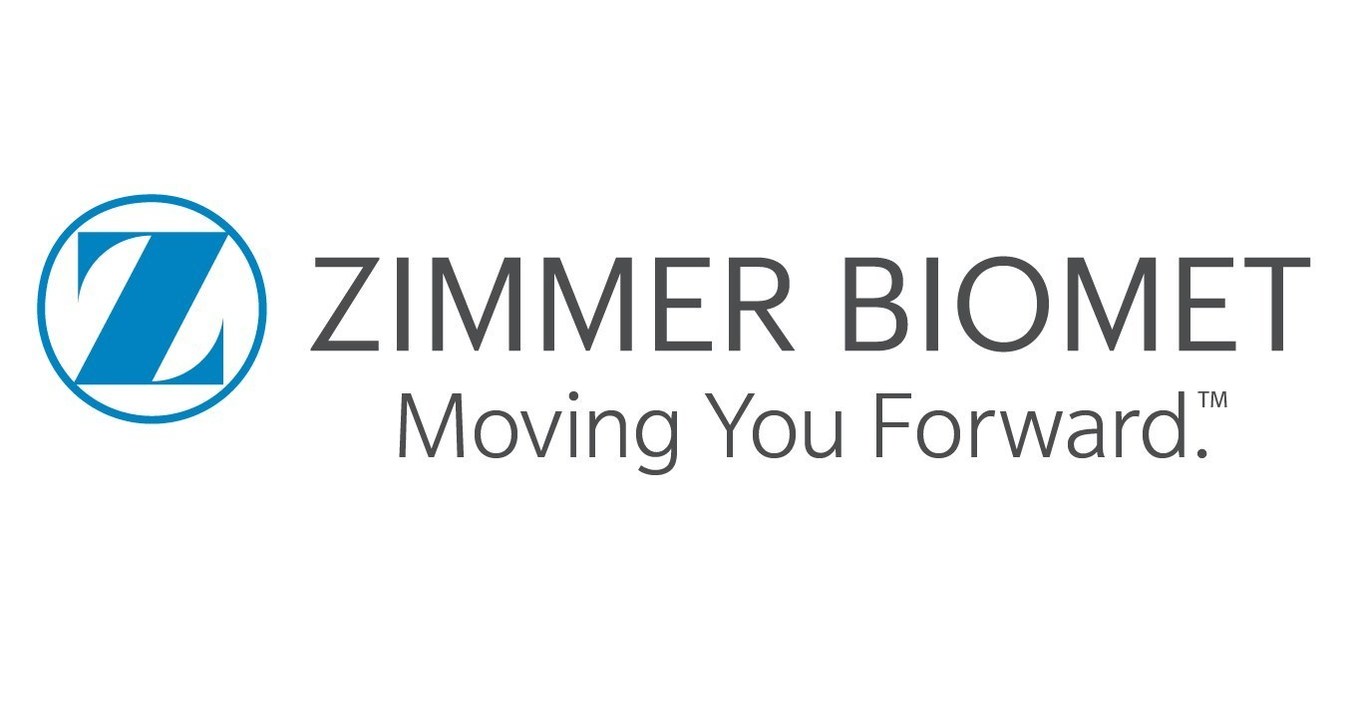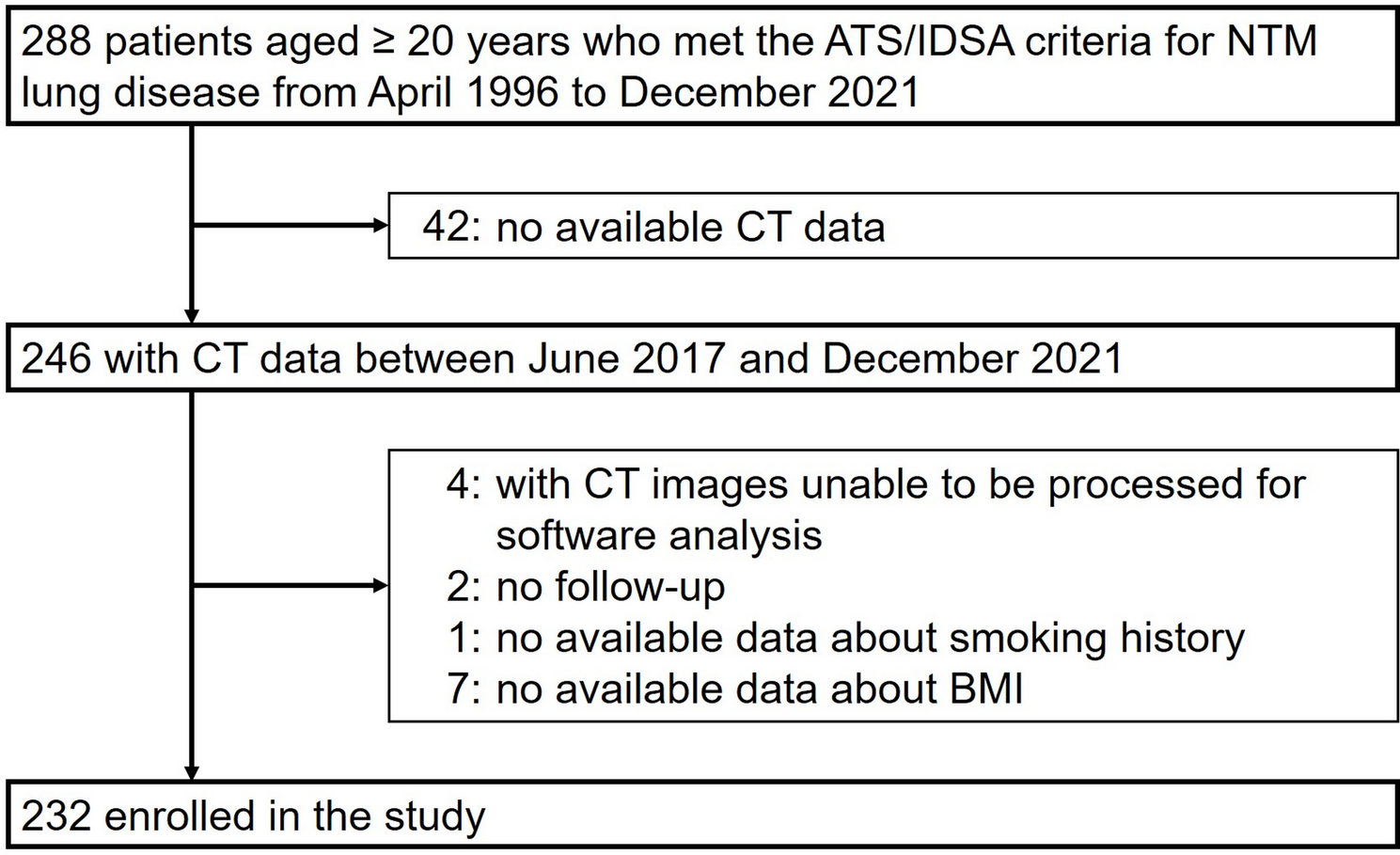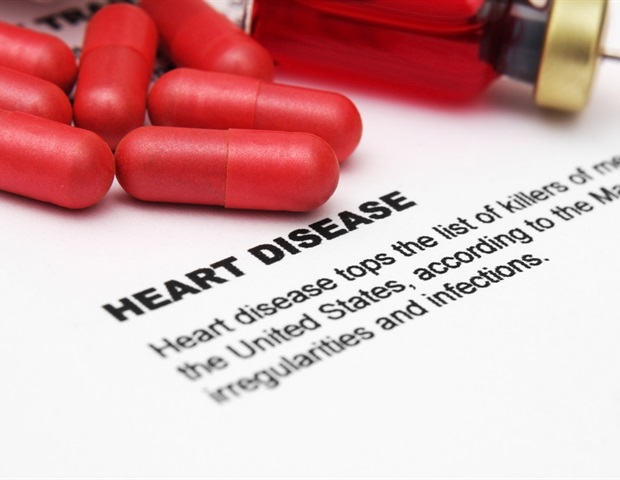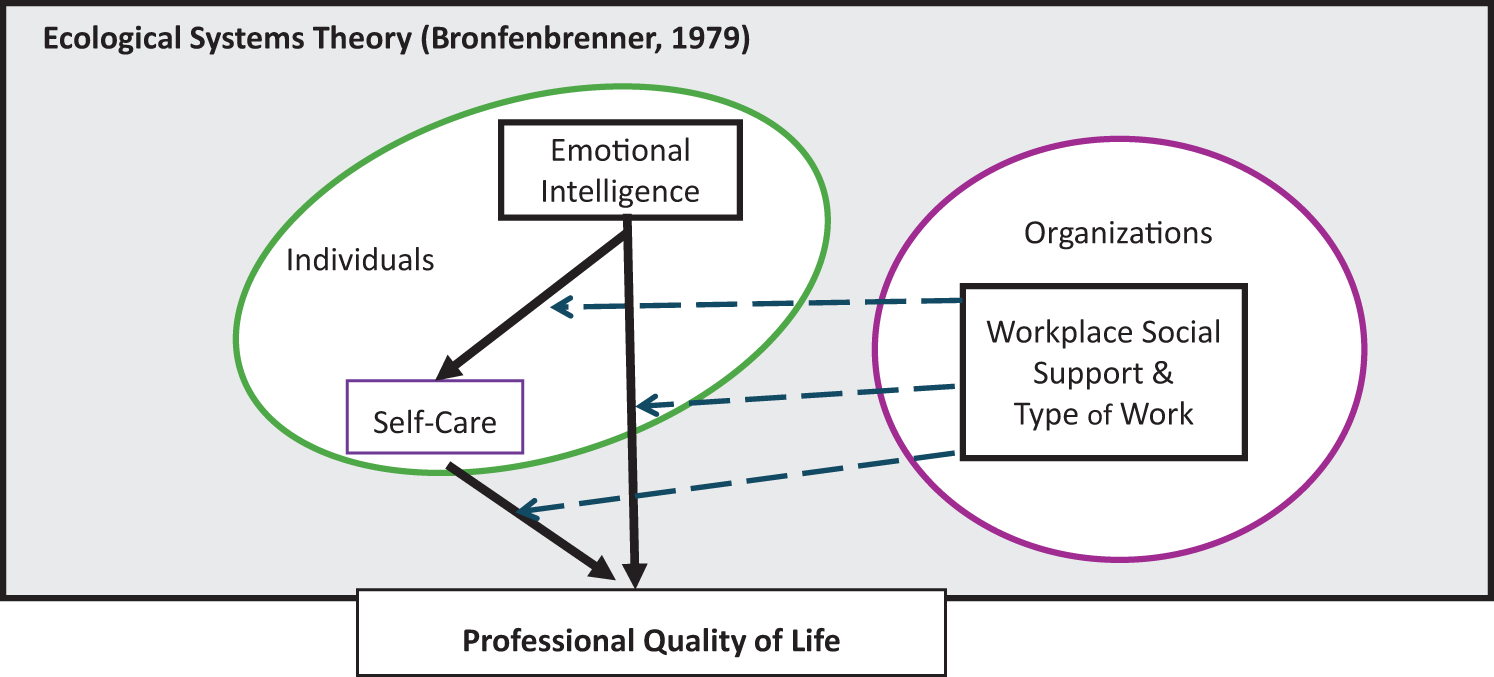Georgian writer-director Alexandre Koberidze (What Do We See When We Look at the Sky?) shot his latest feature film, Dry Leaf, on an old Sony Ericsson phone, with his father, David, as the star, and music and sound courtesy of Alexandre’s…
Blog
-

Zimmer Biomet Highlights Robotics & Musculoskeletal Product Innovations at 2025 AAHKS Annual Meeting
Company to Spotlight Comprehensive Hip & Knee Portfolios and Latest Advancements in Robotics, Including the mBôs™ System Following Recent Acquisition of Monogram Technologies
WARSAW, Ind., Oct. 21, 2025 /PRNewswire/ — Zimmer Biomet Holdings, Inc. (NYSE and SIX: ZBH), a global medical technology leader, today announced that it is highlighting bold innovations across its broad robotics and musculoskeletal portfolio at the 2025 annual meeting of the American Association of Hip and Knee Surgeons (AAHKS).
During the meeting, the company’s booth will prominently feature its broad knee and hip portfolio of customer-centric solutions and infection solutions, along with the latest robotic technologies and data solutions to meet a vast array of surgeon techniques and preferences. Zimmer Biomet will also showcase the surgeon-guided robotic technology recently acquired through the Monogram Technologies Inc. acquisition.
“Orthopedics is at a pivotal moment,” said Ivan Tornos, Chairman, President and Chief Executive Officer of Zimmer Biomet. “As the population ages and expectations rise, patients are demanding more: less disruption, faster recovery and care that fits their lives. Surgeons need solutions that match this urgency, and that’s why we’ve engineered next-generation hip and knee implants and curated an ecosystem of robotics, digital platforms and AI. This isn’t incremental innovation — it’s the most ambitious innovation cycle in our company’s history, positioning Zimmer Biomet to deliver the industry’s most comprehensive and adaptable suite of orthopedic robotics and navigation technologies designed to elevate surgical precision and transform patient outcomes.”
The highlights at the Zimmer Biomet booth (#1206) include:
Digital and Technology Solutions
- mBôs™ TKA System : a CT-based, semi-autonomous, total knee arthroplasty (TKA) robotic technology that received U.S. Food and Drug Administration (FDA) 510(k) clearance. A surgeon-guided fully autonomous version of this technology is currently in clinical trials.
- ROSA® Knee with OptimiZe ™: the newest version of the ROSA® Knee System that customizes and looks to enhance the surgeon’s experience with personalized and intelligent surgical planning, new positioning, tracking and alignment features to improve accuracy1 and reduce user variability,2 pending U.S. FDA 510(k) clearance.
- TMINI® Miniature Robotic System : a state-of-the-art miniature, handheld, wireless CT-based robotic system designed to enable accurate and precise implant placement.
- ZBEdge® Analytics : a data platform that delivers intra-operative, mobility and outcome insights directly on a smartphone application, enabling surgeons to objectively assess performance and understand the potential impact of clinical decisions on patient recovery.
- mymobility® Care Management Platform : a digital care management platform that delivers continuous data and patient-reported feedback to facilitate care, outcomes and satisfaction about patients’ surgical preparation and recovery.
Knee Reconstruction Technologies
- Oxford® Cementless Partial Knee : the only FDA-approved mobile cementless partial knee implant in the U.S. that has been shown to be efficient3,4 in the operating room and has been proven to have excellent survivorship5,6 worldwide.
- Persona® OsseoTi® Keel Tibia : a cementless tibia for TKA with a 3D printed porous tray that provides stable initial and biological fixation and intra-operative versatility.7
- Persona® SoluTion™ PPS® Femur : a knee implant component designed to serve as an alternative metal for patients with certain metal sensitivities like nickel and cobalt-chrome (Co, Cr, Ni) and bone cement that features a porous coating for cementless fixation and leverages a proprietary surface treatment designed to enhance wear performance.8,9
- Persona IQ® The Smart Knee® : a first-to-world smart knee implant that captures patient-specific gait and range of motion metrics directly from the knee during patient monitoring to provide post-operative recovery insights10,11 and trends, allowing care teams to monitor and personalize the TKA patient experience.10-12
Hip Reconstruction Technologies
- Z1® Femoral Hip System : offers an expansive size range and three distinct neck options designed to address a variety of patient anatomies and reconstructive needs.
- OrthoGrid Hip AI® : an AI-powered, fluoroscopy-based technology that provides direct anterior hip surgeons with intuitive and instantaneous intra-operative tools to assist surgeons in achieving the desired surgical outcomes for component positioning.13
- HAMMR® Automated Hip Impaction System : designed to address surgeon strain, fatigue and repetitive motion associated with the traditional mallet.
For more information about Zimmer Biomet events at 2025 AAHKS, visit https://www.zimmerbiomet.com/en/aahks2025.html.
About Zimmer Biomet
Zimmer Biomet is a global medical technology leader with a comprehensive portfolio designed to maximize mobility and improve health. We seamlessly transform the patient experience through our innovative products and suite of integrated digital and robotic technologies that leverage data, data analytics and artificial intelligence.
With 90+ years of trusted leadership and proven expertise, Zimmer Biomet is positioned to deliver the highest quality solutions to patients and providers. Our legacy continues to come to life today through our progressive culture of evolution and innovation.
For more information about our product portfolio, our operations in 25+ countries and sales in 100+ countries or about joining our team, visit www.zimmerbiomet.com or follow on LinkedIn at www.linkedin.com/company/zimmerbiomet or X at www.x.com/zimmerbiomet.
Important Safety Information for Oxford Cementless Partial Knee:
The Oxford® Cementless Partial Knee System is indicated for use in unilateral knee procedures with osteoarthritis or avascular necrosis limited to the medial compartment of the knee. It is intended to be implanted without the application of bone cement for patients whose clinical condition would benefit from a shorter surgical time compared to the cemented implant. The Oxford Partial Knee is not indicated for use in the lateral compartment or for patients with ligament deficiency, or for use in simultaneous bilateral surgery or planned staged bilateral procedures. Potential risks include, but are not limited to, loosening, dislocation, fracture, wear and infection, any of which can require additional surgery. For a full list of product indications, contraindications and warnings, please see the associated product Instructions For Use (IFU).
Cautionary Statement Regarding Forward-Looking Statements
This news release contains forward-looking statements within the meaning of the safe harbor provisions of the Private Securities Litigation Reform Act of 1995. Forward-looking statements include, but are not limited to, statements concerning Zimmer Biomet’s expectations, plans, prospects, and product and service offerings, including new product launches and potential clinical successes. Such statements are based upon the current beliefs and expectations of management and are subject to significant risks, uncertainties and changes in circumstances that could cause actual outcomes and results to differ materially. For a list and description of some of such risks and uncertainties, see Zimmer Biomet’s periodic reports filed with the U.S. Securities and Exchange Commission (SEC). These factors should not be construed as exhaustive and should be read in conjunction with the other cautionary statements that are included in Zimmer Biomet’s filings with the SEC. Forward-looking statements speak only as of the date they are made, and Zimmer Biomet disclaims any intention or obligation to update or revise any forward-looking statements, whether as a result of new information, future events or otherwise. Readers of this news release are cautioned not to rely on these forward-looking statements, since there can be no assurance that these forward-looking statements will prove to be accurate. This cautionary statement is applicable to all forward-looking statements contained in this news release.
Laboratory and animal studies are not necessarily indicative of clinical performance.
THINK Surgical and TMINI are trademarks of THINK Surgical, Inc.
Persona IQ:
The objective kinematic data generated by the CSE with CHIRP System are not intended to support clinical decision-making and have not been shown to provide any clinical benefitReferences:
1 Data on File. DVaR-DS250106-01 ROSA Knee System v1.5 Validation Report.
2 Data on File. FER-EMS230714-01 Formative Evaluation Report – July Lab 2023.
3 Pandit, H., et al. “Improved fixation in cementless unicompartmental knee replacement: five-year results of a randomized controlled trial.” JBJS 95.15 (2013): 1365-1372.
4 Stempin R, Kaczmarek W, Stempin K, Dutka J. Midterm Results of Cementless and Cemented Unicondylar Knee Arthroplasty with Mobile Meniscal Bearing: A Prospective Cohort Study. Open Orthop J. 2017 Oct 31;11:1173-1178. doi: 10.2174/1874325001711011173. PMID: 29290853; PMCID: PMC5721307.
5 NJR- UK . The National Joint Registry 22st Annual Report 2025 London, 2024 [Available from: https://reports.njrcentre.org.uk/Portals/0/PDFdownloads/NJR%2022nd%20Annual%20Report%202025_Knees.pdf.
6 AOANJRR. Australian Orthopaedic Association National Joint Replacement Registry (AOANJRR). Hip, Knee & Shoulder Arthroplasty: 2023 Annual Report Adelaide, AOA2024 [updated 2024. Available from: https://aoanjrr.sahmri.com/documents/10180/1798900/AOANJRR+2024+Annual+Report.pdf/9d0bfe03-2282-8fc8-a424-b8d9abb82b1f?t=1727666185313.
7 Mueller J.K., et al. Persona OsseoTi Keel Tibia Provides Stable Initial Fixation 4027.2-GLBL-en. November 2022.
8 Improved Abrasion Resistance of Nitrogen-Hardened Titanium Alloy Surfaces. Current Topics in Orthopaedic Technology. Zimmer. Vol. 3, No. 6 (1991).
9 Zimmer ZRR_WA_2537_12.
10 Cushner FD, Yergler J, ElashoffB, Aubin PM, VertaP, Scuderi GR. Staying Ahead of the Curve: The Case for Recovery Curves in Total Knee Arthroplasty. The Journal of Arthroplasty. 2024;doi:10.1016/j.arth.2024.07.039
11 Cushner FD, Sculco PK, Long WJ. The Talking Knee Is a Reality: What Your Knee Can Tell You After Total Knee Arthroplasty. J OrthopaedicExperience and Innovation. 2022;2022
12 Cushner FD, Schiller P, Gross J, Mueller JK, Hunter W. A Total Knee Arthroplasty Prosthesis Capable of Remote Patient Monitoring. OrthopaedicProceedings. 2021/06/01 2021;103-B(SUPP_9):18-18 doi:10.1302/1358-992X.2021.9.018
13 Cardenas JM, Gordon D, Waddell BS, Kitziger KJ, Peters PC Jr, Gladnick BP. Does Artificial Intelligence Outperform Humans Using Fluoroscopic-Assisted Computer Navigation for Total Hip Arthroplasty? Arthroplasty Today. 2024 May 27;27:101410. doi: 10.1016/j.artd.2024.101410. PMID: 38840694; PMCID: PMC11150909.SOURCE Zimmer Biomet Holdings, Inc.
Continue Reading
-

Elena Bianca Zagari portrays Naples beyond the male gaze
It is unsurprising that, as her hometown continued to shape her personal imagery over the years, her debut book, “Un Mondo Proprio,” brings her distinctive vision of the people and places of Naples to the fore, starting from the young women…
Continue Reading
-

How to get Bulbasaur, Ivysaur, and Venusaur in Pokemon Legends ZA | Esports News
Bulbasaur, Ivysaur, and Venusaur in Pokemon Legends ZA make a powerful comeback, giving longtime Kanto fans a nostalgic yet challenging opportunity to relive one of the…
Continue Reading
-

Association of lung field area with mortality in Mycobacterium avium complex lung disease: a longitudinal cohort study | BMC Infectious Diseases
Study design and participants
This study was conducted as a longitudinal cohort study through a retrospective review of medical records at NHO Fukuoka National Hospital. We reviewed 288 patients aged ≥ 20 years who met the American Thoracic Society/Infectious Diseases Society of America (ATS/IDSA) diagnostic criteria for MAC lung disease between April 1, 1996, and December 31, 2021 [6]. Of these, we excluded 42 patients with no available data of chest computed tomography (CT) scans between June 1, 2017, and December 31, 2021, 4 patients whose CT image data were unable to be processed for the present analysis by the software, 2 patients without any follow-up medical records after the date of CT scanning, 1 patient with no information concerning smoking history, and 7 patients without body mass index (BMI) data. Hence, the remaining 232 subjects with MAC lung disease were enrolled in the present study (Fig. 1). When multiple CT scans were available during the 2017–2021 period, the earliest scan was used for analysis. The follow-up period was defined as the time from the CT scan to either July 2023 or a maximum of 5 years.
Fig. 1 Quantitative CT image analysis
CT examinations were performed with a 160-slice multidetector CT scanner (Aquilion Lightning, Canon Medical Systems, Otawara, Japan) with a slice thickness of 5 mm. Quantitative CT image analyses were performed using dedicated software (AZE Virtual Place, Canon Medical Systems, Otawara, Japan) by a radiologic technologist without prior knowledge of the clinical data. For each patient, the lung field areas (LFAs) were evaluated separately in six domains using three axial CT slices in accordance with the Goddard score assessment protocols—the levels of the upper margin of the aortic arch (right and left upper lung field), the carina (right and left middle lung field), and 1–3 cm above the top of the diaphragm (right and left lower lung field) [13]. To identify the extent of cavitary destruction of the lung, the low-attenuation areas (LAAs) were defined as lung areas below − 950 Hounsfield units (HU), as in previous literature [14], and were also semiautomatically estimated using the same images (see Fig. S1 in Additional file 1) [15]. Mean values of LFA and LAA were calculated and used for the present analyses. The LFA/LAA ratio was computed for each of the six lung fields, and the average of these six values was used in the analysis. When dividing the study subjects into three groups based on the tertile distribution of the mean LFA, the cutoff values were as follows: lowest, ≤ 69.54 cm2 (N = 78); middle, 69.55–85.59 cm2 (N = 77); and highest, ≥ 85.60 cm2 (N = 77). For validation analysis between the mean values of LFA and lung volume (LV), a total of 9 subjects were randomly selected in order to assess LV. LV was calculated with the following 3 steps: at first, the lung plus bronchus volume (LBV) was identified by extracting the area less than − 500 HU. Next, the bronchus volume (BV) was measured by extracting the area less than − 920 HU and by ensuring the continuity of connection to other bronchi. Lastly, the LV was calculated by subtracting the BV from the LBV.
Clinical evaluations
For each case, respiratory physicians reviewed the patient’s medical records and assessed the demographic and clinical characteristics: age, gender, height, weight, smoking history, medical history, and results of mycobacterial cultures. BMI (kg/m2) was calculated as weight divided by squared height. Smoking habit was dichotomized as never smokers and smokers, considering that smoking could have affected emphysematous changes of the lung, appearing as low-attenuation areas (< −950 HU). Antibiotic treatment for MAC disease was defined as the prescription of clarithromycin and/or rifampicin and/or ethambutol. MAC species were categorized into three groups: M. avium group, Mycobacterium intracellulare (M. intracellulare) group, and co-infection group (subjects with both M. avium and M. intracellulare detected).
Statistical analysis
R software version 4.1.2 (R Foundation for Statistical Computing, Vienna, Austria) was used to perform all statistical analyses. A two-sided P < 0.05 was considered to indicate statistical significance. For baseline characteristics, the heterogeneity in each variable among the levels of mean LFA was evaluated using the analysis of variance (ANOVA), chi-square test, or Kruskal–Wallis test. Pearson’s correlation coefficient was calculated to assess the correlation between the mean values of LFA and those of LV. Kaplan–Meier curves were constructed to show the survival rate over the follow-up period. The unadjusted and multivariable-adjusted hazard ratios (HRs) with their 95% confidence intervals (95% CIs) according to the levels of mean LFA for all-cause mortality were estimated using a Cox proportional hazards model. Adjustments were made for age, gender, BMI, smoking history, MAC treatment, MAC species, co-infection with NTM other than MAC, and mean LAA, which has been reported as a potential prognostic factor in patients with NTM lung disease [16, 17]. Relevant models were used to evaluate the linear trends in the risk of all-cause death across the tertile classification of mean LFA. We evaluated the ability of mean LFA and mean LAA to predict mortality using receiver operating characteristic curves and estimated the area under the curve (AUC) for each. The AUCs were compared using the DeLong method. The robustness of the main results was tested through sensitivity analyses limiting the subjects to M. avium-positive or M. intracellulare-positive cases individually. Since smoking exposure can accelerate emphysematous change and increase the value of LAA in the lung, stratified analysis was performed by smoking status.
Ethical considerations
The study was approved by the NHO Fukuoka National Hospital Institutional Review Board for Clinical Research (#F5-34). For this study, informed consent has been waived by the NHO Fukuoka National Hospital Institutional Review Board due to the anonymity and retrospective nature of the study. This study was conducted according to the principles of the Declaration of Helsinki.
Continue Reading
-

Baby’s birthweight increases risk of cardiovascular disease in preeclamptic and hypertensive women
A new study shows that preeclamptic and hypertensive pregnant women’s risk of getting cardiovascular disease is linked to their baby’s birthweight.
Preeclampsia and other hypertensive disorders of pregnancy (HDPs) are serious…
Continue Reading
-

Baby’s birthweight increases risk of cardiovascular disease in preeclamptic and hypertensive women
A new study shows that preeclamptic and hypertensive pregnant women’s risk of getting cardiovascular disease is linked to their baby’s birthweight.
Preeclampsia and other hypertensive disorders of pregnancy (HDPs) are serious…
Continue Reading
-

Professional quality of life is related to emotional intelligence, self-care, and work conditions in healthcare workers: findings from a moderated mediation analysis | BMC Health Services Research
Stamm HB. Professional quality of life: compassion satisfaction and fatigue. Pocadello. 2010. https://proqol.org/.
Sacco TL, Copel LC. Compassion satisfaction: a concept analysis in nursing. Nurs Forum. 2018;53(1):76–83. https://doi.org/10.1111/nuf.12213.
Google Scholar
Youn H, Lee M, Jang SJ. Person-centred care among intensive care unit nurses: a cross-sectional study. Intensive And Crit Care Nurs. 2022;73:103293. https://doi.org/10.1016/j.iccn.2022.103293.
Google Scholar
Zhang Y-Y, Han W-L, Qin W, Yin H-X, Zhang C-F, Kong C, Wang Y-L. Extent of compassion satisfaction, compassion fatigue and burnout in nursing: a meta-analysis. J Nurs Manag. 2018;26(7):810–19. https://doi.org/10.1111/jonm.12589.
Google Scholar
Figley CR. Compassion fatigue: Toward a new understanding of the costs of caring. In secondary traumatic stress: self-care issues for clinicians, researchers, & educators. Vol. 2nd. Sidran Press; 1995. p. 3–28.
Joinson C. Coping with compassion fatigue. Nursing. 1992;22(4):116, 118–119, 120.
Google Scholar
Peters E. Compassion fatigue in nursing: a concept analysis. Nurs Forum. 2018;53(4):466–80. https://doi.org/10.1111/nuf.12274.
Google Scholar
Sinclair S, Raffin-Bouchal S, Venturato L, Mijovic-Kondejewski J, Smith-MacDonald L. Compassion fatigue: a meta-narrative review of the healthcare literature. Int J Nurs Stud. 2017;69:9–24. https://doi.org/10.1016/j.ijnurstu.2017.01.003.
Google Scholar
Sorenson C, Bolick B, Wright K, Hamilton R. An evolutionary concept analysis of compassion fatigue. J Nurs Scholarsh. 2017;49(5):557–63. https://doi.org/10.1111/jnu.12312.
Google Scholar
Garnett A, Hui L, Oleynikov C, Boamah S. Compassion fatigue in healthcare providers: a scoping review. BMC Health Serv Res. 2023;23(1):1336. https://doi.org/10.1186/s12913-023-10356-3.
Google Scholar
Sorenson C, Bolick B, Wright K, Hamilton R. Understanding compassion fatigue in healthcare providers: a review of current literature. J Nurs Scholarsh. 2016;48(5):456–65. https://doi.org/10.1111/jnu.12229.
Google Scholar
Maslach C, Jackson SE. The measurement of experienced burnout. J Organizational Behav. 1981;2(2):99–113.
Google Scholar
Maslach C, Schaufeli WB, Leiter MP. Job Burnout. 2001;52:397–422. https://doi.org/10.1146/annurev.psych.52.1.397.
Google Scholar
Bianchi R, Truchot D, Laurent E, Brisson R, Schonfeld I. Is burnout solely job-related? A critical comment. Scand J Psychol. 2014;55:357–61. https://doi.org/10.1111/sjop.12119.
Google Scholar
Demerouti E, Bakker AB, Peeters MCW, Breevaart K. New directions in burnout research. Eur J Work Organ Psy. 2021;30(5):686–91. https://doi.org/10.1080/1359432X.2021.1979962.
Google Scholar
Edu-Valsania S, Laguia A, Moriano J. Burnout: a review of theory and measurement. Int J Environ Res Pub Health And Public Health. 2022, (1780;19. https://doi.org/10.3390/ijerph19031780.
Maslach C, Leiter MP. Understanding the burnout experience: Recent research and its implications for psychiatry. World Pscychiatry. 2016;15:103–11. https://doi.org.ezproxy.brunel.ac.uk/10.1002/wps.20311
Cavanagh N, Cockett G, Heinrich C, Doig L, Fiest K, Guichon JR, Page S, Mitchell I, Doig CJ. Compassion fatigue in healthcare providers: a systematic review and meta-analysis. Nurs Ethics. 2020;27(3):639–65. https://doi.org/10.1177/0969733019889400.
Google Scholar
Maillet S, Read E. Work environment characteristics and emotional intelligence as correlates of nurses’ compassion satisfaction and compassion fatigue: a cross-sectional survey study. Nurs Rep. 2021;11(4):847–58. https://doi.org/10.3390/nursrep11040079.
Google Scholar
Xie W, Chen L, Feng F, Okoli CTC, Tang P, Zeng L, Jin M, Zhang Y, Wang J. The prevalence of compassion satisfaction and compassion fatigue among nurses: a systematic review and meta-analysis. Int J Nurs Stud. 2021;120:103973. https://doi.org/10.1016/j.ijnurstu.2021.103973.
Google Scholar
Leo CG, Sabina S, Tumolo MR, Bodini A, Ponzini G, Sabato E, Mincarone P. Burnout among healthcare workers in the COVID 19 era: a review of the existing literature. Front Public Health. 2021;9. https://www.frontiersin.org/articles/10.3389/fpubh.2021.750529.
Zhang X, Song Y, Jiang T, Ding N, Shi T. Interventions to reduce burnout of physicians and nurses: an overview of systematic reviews and meta-analyses. Med (baltim). 2020;99(26). https://journals.lww.com/md-journal/fulltext/2020/06260/interventions_to_reduce_burnout_of_physicians_and.89.aspx.
De Simone S, Vargas M, Sevillo G. Organizational strategies to reduce physician burnout: a systematic review and meta-analysis. Aging Clin Exp Res. 2021;33(4):883–94. https://doi.org.ezproxy.brunel.ac.uk/10.1007/s40520-019-01368-3 .
DeChant PF, Acs A, Rhee KB, Boulanger TS, Snowdon JL, Tutty MA, Sinsky CA, Craig KJT. Effect of organization-directed workplace interventions on Physician burnout: a systematic review. Mayo Clinic Proc: Innovations, Qual & Outcomes. 2019;3(4):384–408. https://doi.org/10.1016/j.mayocpiqo.2019.07.006.
Google Scholar
Fox S, Lydon S, Byrne D, Madden C, Connolly F, O’Connor P. A systematic review of interventions to foster physician resilience. Postgrad Med J. 2018;94(1109):162–70. https://doi.org/10.1136/postgradmedj-2017-135212.
Panagioti M, Panagopoulou E, Bower P, Lewith G, Kontopantelis E, Chew-Graham C, Dawson S, van Marwijk H, Geraghty K, Esmail A. Controlled interventions to reduce burnout in physicians: a systematic review and meta-analysis. JAMA Intern Med. 2017;177(2):195–205. https://doi.org/10.1001/jamainternmed.2016.7674.
Google Scholar
Petrie K, Crawford J, Baker STE, Dean K, Robinson J, Veness BG, Randall J, McGorry P, Christensen H, Harvey SB. Interventions to reduce symptoms of common mental disorders and suicidal ideation in physicians: a systematic review and meta-analysis. Lancet Psychiatry. 2019;6(3):225–34. https://doi.org/10.1016/S2215-0366(18)30509-1.
Google Scholar
Coles E, Anderson J, Maxwell M, Harris FM, Gray NM, Milner G, MacGillivray S. The influence of contextual factors on healthcare quality improvement initiatives: a realist review. Systematic Rev. 2020;9(1):94. https://doi.org/10.1186/s13643-020-01344-3.
Google Scholar
Chen C-C, Lan Y-L, Chiou S, Y-C. The effect of emotional labor on the physical and mental health of health professionals: emotional exhaustion has a mediating effect. Healthcare. 2023;11(1):104. https://doi.org/10.3390/healthcare11010104.
Maben J, Bridges J. Covid-19: Supporting nurses’ psychological and mental health. J Clin nursing. 2020;29(15–16):2742–50. https://doi.org/10.1111/jocn.15307.
Google Scholar
Agler R, De Boeck P. On the interpretation and use of mediation: multiple perspectives on mediation analysis. Front psychol. 2017;8. https://doi.org/10.3389/fpsyg.2017.01984.
Rohlf VI, Scotney R, Monaghan H, Bennett P. Predictors of professional quality of life in veterinary professionals. J Vet Med Educ. 2022;49(3):372–81. https://doi.org/10.3138/jvme-2020-0144.
Google Scholar
Rohrer JM, Hünermund P, Arslan RC, Elson M. That’s a lot to process! Pitfalls of popular path models. Adv Met pract psychol Sci. 2022;5(2). https://doi.org/10.1177/25152459221095827.
Bronfenbrenner U. The ecology of human development. Harvard University Press; 1979.
Google Scholar
Mayer JD, Salovey P. The intelligence of emotional intelligence. Intelligence. 1993;17:433–42.
Google Scholar
Sarrionandia A, Mikolajzak. A meta-analysis of the possible behavioural and biological variables linking trait emotional intelligence to health. Health Psychol Rev. 2020;14(2):220–44. https://doi.org/10.1080/17437199.2019.1641423.
Google Scholar
Lea R, Davis SK, Mahoney B, Qualter P. Do emotionally intelligent adolescents flourish or flounder under pressure? Linking emotional intelligence to stress regulation mechanisms. Pers Indiv Differ. 2023;201:111943. https://doi.org/10.1016/j.paid.2022.111943.
Google Scholar
Ma J, Zeng Z, Fang K. Emotionally savvy employees fail to enact emotional intelligence when ostracized. Pers Indiv Differ. 2022;185:111250. https://doi.org/10.1016/j.paid.2021.111250.
Google Scholar
Pena-Sarrionandia A, Mikolajczak M, Gross JJ. Integrating emotion regulation and emotional intelligence traditions: a meta-analysis. Front psychol. 2015;6:article 160.
Google Scholar
Matarese M, Lommi M, Marinis MGD, Riegel B. A systematic review and integration of concept analyses of self-care and related concepts. J Nurs scholarsh. 2018;50(3):296–305. https://doi.org/10.1111/jnu.12385.
Riegel B, Dunbar SB, Fitzsimons D, Freedland KE, Lee CS, Middleton S, Stromber A, Vellone E, Webber DE, Jaarsma T. Self-care research: Where are we now? Where are we going? Int J Nurs Stud. 2021;116. https://doi-org.ezproxy.brunel.ac.uk/10.1016/j.ijnurstu.2019.103402.
Keesler JM, Troxel J. They care for others, but what about themselves? Understanding self-care among DSPs’ and its relationship to professional quality of life. Intellect Dev Disab. 2020;58(3):221–40. https://doi.org/10.1352/1934-9556-58.3.221.
Google Scholar
Nogueiro J, Cañas-Lerma AJ, Cuartero-Castañer ME, Bolaños I. The professional quality of life and its relation to self-care in mediation professionals. Soc Work Soc Sci Rev. 2022;23:55–73. https://doi.org/10.1921/swssr.v23i1.1972.
Google Scholar
Bermejo-Martins E, Luis EO, Fernandez-Berrocal P, Martinez M, Sarrionandia A. The role of emotional intelligence and self-care in the stress perception during COVID-19 outbreak: an intercultural moderated mediation analysis. Pers Indiv Differ. 2021;177:110679. https://doi.org/10.1016/j.paid.2021.110679.
Google Scholar
Antonovsky A. Health, stress, and coping. Jossey-Bass; 1979.
Antonovsky A. Unraveling the mystery of health: how people manage stress and stay well. Jossey-Bass; 1987.
Zapf D, Kern M, Tschan F, Holman D, Semmer NK. Emotion work: A work psychology perspective. Annu Rev Organ Psychol Organ Behav. 2021;8(1):139–72.
Google Scholar
Peacock A. Compassion satisfaction, compassion fatigue, and vicarious trauma. Nurs ManAge. 2023;54(1). https://journals.lww.com/nursingmanagement/fulltext/2023/01000/compassion_satisfaction,_compassion_fatigue,_and.4.aspx
Rivera-Kloeppel B, Mendenhall T. Examining the relationship between self-care and compassion fatigue in mental health professionals: a critical review. Traumatology. 2023;29(2):163.
Google Scholar
Sansó N, Galiana L, Oliver A, Tomás-Salvá M, Vidal-Blanco G. Predicting professional quality of life and life satisfaction in Spanish nurses: a cross-sectional study. Int J Environ Res Pub Health and Public Health. 2020;17(12). https://doi.org/10.3390/ijerph17124366.
Kong F, Gong X, Sajjad S, Yang K, Zhao J. How is emotional intelligence linked to life satisfaction? The mediating role of social support, positive affect and negative affect. J Retailing Happoness Stud. 2019;20:2733–45. https://doi.org/10.1007/s10902-018-00069-4.
Google Scholar
Harris JI, Winskowski AM, Engdahl BE. Types of workplace social support in the prediction of job satisfaction. The Career Devel Q. 2007;56(2):150–56. https://doi.org/10.1002/j.2161-0045.2007.tb00027.x.
Google Scholar
Browning BR, McDermott RC, Scaffa ME. Transcendent characteristics as predictors of Counselor professional quality of life. J Ment Health counselling. 2019;41(1):51–64. https://doi.org/10.17744/mehc.41.1.05.
Google Scholar
Duarte J. Professional quality of life in nurses: contribution for the validation of the Portuguese version of the professional quality of life scale-5 (ProQOL-5). Analise PsicoLogica. 2017;35. https://doi.org/10.14417/ap.1260.
Tran ANP, To QG, Huynh V-AN, Le KM, To KG. Professional quality of life and its associated factors among Vietnamese doctors and nurses. BMC Health Serv Res. 2023;23(1):924. https://doi.org/10.1186/s12913-023-09908-4.
Google Scholar
Yılmaz G, Üstün B. Sociodemographic and professional factors influencing the professional quality of life and post-traumatic growth of oncology nurses*. J Psychiatr Nurs. 2019;10(4):241–50. https://doi.org/10.14744/phd.2019.43255.
Google Scholar
Ball HL. Conducting online surveys. J Hum LAct. 2019;35(3):413–17. https://doi.org/10.1177/0890334419848734.
Google Scholar
Thompson CB, Panacek EA. Research study designs: Non-experimental. Air Med J. 2007;26(1):18–22. https://doi.org/10.1016/j.amj.2006.10.003.
Google Scholar
Vogt WP. The dictatorship of the problem: Choosing research methods. Methodol Innov Online. 2008;3(1):1–17. https://doi.org/10.4256/mio.2008.0006.
Google Scholar
NSW Government. NSW health workforce Data. 2023. https://www.psc.nsw.gov.au/assets/psc/PSC-2023-Workforce-Profile-Report.pdf. NSW Public Commission.
Galiana L, Oliver A, Arena F, Simone GD, Tomas JM, Vidal-Blanco G, Munoz-Martinez I, Sanso N. Development and validation of the short professional quality of life scale based on versions IV and V of the professional quality of life scale. Health And Qual Of Life Outcomes. 2020;18:364. https://doi.org/10.1186/s12955-020-01618-3.
Google Scholar
Wong C-S, Law KS. The effects of leader and follower emotional intelligence on performance and attitude: an exploratory study. Leadersh Q. 2002;13(3):243–74. https://doi.org.ezproxy.brunel.ac.uk/10.1016/S1048-9843(02)00099-1
Lee J, Miller SE, Bride BE. Development and initial validation of the self-care practices scale. Soc Work. 2020;65(1):21–28. https://doi.org.ezproxy.brunel.ac.uk/10.1093/sw/swz045.
Cook-Cottone CP, Guyker WM. The development and validation of the mindful self-care scale (MSCS): An assessment of practices that support positive embodiment. Mindfulness. 2018;9:161–75.
Google Scholar
Li Q, Xu L, Wang Y, Zhu Y, Huang Y. Exploring the self-care practices of social workers in China under the COVID-19 pandemic. Soc Work And Policy. 2022;16(3):265–74. https://doi.org.ezproxy.brunel.ac.uk/10.1111/aswp.12266
Bloomquist K, Wood L, Friedmeyer-Trainor K, Kim H-W. Self-care and professional quality of life: Predictive factors among MSW practitioners. Adv Soc Work. 2015;16(2):292–311. https://doi.org/10.18060/18760.
Bur H, Bethelsen H, Moncada S, Nubling M, Dupre E, Demiral Y, Oudyk J, Kristensen TS, Llorens C, Navarro A, Lincke H-J, Bocerean C, Sahan S, Prhrt P, A., Copsoq Network I. The third version of the Copenhagen psychosocial questionnaire. Saf Health Work. 2019;10(4):482–503. https://doi.org/10.1016/j.shaw.2019.10.002.
Google Scholar
Hayes AF. Introduction to mediation, moderation, and conditional process analysis: A regression-based approach. 3rd. The Guilford Press; 2022. https://ebookcentral.proquest.com/lib/jcu/detail.action?docID=6809031.
Hayes AF, Coutts JJ. Use omega rather than Cronbach’s alpha for estimating reliability. But …. Commun Methods and measures. 2020;14(1):1–24. https://doi.org/10.1080/19312458.2020.1718629.
Google Scholar
Kalkbrenner MT. Alpha, omega, and H internal consistency reliability estimates: Reviewing these options and when to use them. Couns Outcome Res And evaluation. 2023;14(1):77–88. https://doi.org/10.1080/21501378.2021.1940118.
Google Scholar
Hayes AF. Partial, conditional, and moderated moderated mediation: Quantification, inference, and interpretation. Commun Monogr. 2018;85(1):4–40. https://doi.org/10.1080/03637751.2017.1352100.
Google Scholar
Ma J, Zeng Z, Fang K. Emotionally savvy employees fail to enact emotional intelligence when ostracized. Pers Indiv Differ. 2021;185:111250. https://doi.org/10.1016/j.paid.2021.111250.
Google Scholar
Singh J, Karanika-Murray M, Baguley T, Hudson J. A systematic review of job demands and resources associated with compassion fatigue in mental health professionals. Int J Environ Res Pub Health And Public Health. 2020;17(19). https://doi.org/10.3390/ijerph17196987.
Kim HJ, Hur W-M, Moon T-W, Jun J-K. Is all support equal? The moderating effects of Supervisor, coworker, and organizational support on the link between emotional labor and job performance. BRQ Bus Res Q. 2017;20(2):124–36. https://doi.org/10.1016/j.brq.2016.11.002.
Google Scholar
Ormiston HE, Nygaard MA, Apgar S. A systematic review of secondary traumatic stress and compassion fatigue in teachers. Sch Ment Health. 2022;14(4):802–17. https://doi.org/10.1007/s12310-022-09525-2.
Google Scholar
Hunsaker S, Chen H-C, Maughan D, Heaston S. Factors that influence the development of compassion fatigue, burnout, and compassion satisfaction in emergency department nurses. J Nurs scholarsh. 2015;47(2):186–94. https://doi.org/10.1111/jnu.12122.
Google Scholar
Sanchez-Gomez M, Sadovyy M, Breso E. Health-care professionals amid the COVID-19 Pandemic: how emotional intelligence may enhance work performance traversing the mediating role of work engagement. J Clin Med. 2021;10(18). https://doi.org/10.3390/jcm10184077.
Alonazi WB. The impact of emotional intelligence on job performance during COVID-19 crisis: a cross-sectional analysis. Phychol Res Behav Manag. 2020;13(null):749–57. https://doi.org/10.2147/PRBM.S263656.
Google Scholar
Mackay SJ, Baker R, Collier D, Lewis S. A comparative analysis of emotional intelligence in the UK and Australian radiographer workforce. Radiography. 2013;19(2):151–55. https://doi.org/10.1016/j.radi.2012.11.005.
Google Scholar
Shah DK. WLEIS as a measure of emotional intelligence of healthcare professionals: a confirmatory factor analysis. J Health Manag. 2022;24(2):268–74. https://doi.org/10.1177/09720634221088057.
Google Scholar
Sun H, Wang S, Wang W, Han G, Liu Z, Wu Q, Pang X. Correlation between emotional intelligence and negative emotions of front-line nurses during the COVID-19 epidemic: a cross-sectional study. J Clin nursing. 2021;30(3–4):385–96. https://doi.org/10.1111/jocn.15548.
Google Scholar
Weng H-C, Hung C-M, Liu Y-T, Cheng Y-J, Yen C-Y, Chang C-C, Huang C-K. Associations between emotional intelligence and doctor burnout, job satisfaction and patient satisfaction. Med Educ. 2011;45(8):835–42. https://doi.org/10.1111/j.1365-2923.2011.03985.x.
Google Scholar
Bhullar N, Schutte NS, Malouff JM. Associations of individualistic-collectivistic orientations with emotional intelligence, mental health, and satisfaction with life: a tale of two countries. Individual Differences Res. 2012;10(3).
Gunkel M, Schlagel C, Engle RL. Culture’s influence on emotional intelligence: An empirical study of nine countries. J Int Manag. 2014;20:256–74. https://doi.org/10.1016/j.intman.2013.10.002.
Google Scholar
Foster K, Fethney J, McKenzie H, Fisher M, Harkness E, Kozlowski D. Emotional intelligence increases over time: A longitudinal study of Australian pre-registration nursing students. Nurse Educ Today. 2017;55:65–70. https://doi.org/10.1016/j.nedt.2017.05.008.
Google Scholar
Cary H. A review of factors influencing employee retention within the HealthCare workforce. 2024.
Sybert QM. Healthcare workers with attitude: COVID-19 Pandemic affects their Work-related attitudes. 2024.
Weidman AJ. Establishing a sustainable healthcare delivery workforce in the wake of COVID-19. J Health Care Manag. 2022;67(4):234–43. https://doi.org/10.1097/JHM-D-22-00100.
Google Scholar
Bandura A. Social foundations of thought and action: a social cognitive theory. Prentice-Hall, Inc; 1986. p. xiii, 617.
Goncher ID, Sherman MF, Barnett JE, Haskins D. Programmatic perceptions of self-care emphasis and quality of life among graduate trainees in clinical psychology: The mediational role of self-care utilization. Train And Educ In Profesional Phychol. 2013;7(1):53–60. https://doi.org/10.1037/a0031501.
Google Scholar
Eaves T, Mauldin L, Megan CB, Robinson JL. The professional is the personal: A qualitative exploration of self-care practices in clinical infant mental health practitioners. J Soc Service Res. 2020;47(3):369–87. https://doi.org/10.1080/01488376.2020.1817228.
Google Scholar
Zeidner M, Mathews G, Olenik Shemesh D. Cognitive-social sources of wellbeing: Differentiating the roles of coping style, social support and emotional intelligence. J Happiness Stud. 2016;17:2481–501. https://doi.org/10.1007/s10902-015-9703-z.
Google Scholar
Cho H, Lee D. Effects of affective and cognitive empathy on compassion fatigue: Mediated moderation effects of emotion regulation capability. Pers Indiv Differ. 2023;211:112264. https://doi.org/10.1016/j.paid.2023.112264.
Google Scholar
Huang X, Chan SCH, Lam W, Nan X. The joint effect of leader-member exchange and emotional intelligence on burnout and work performance in call centers in China. Int J Hum Resour MAn. 2010;21(7):1124–44. https://doi.org/10.1080/09585191003783553.
Google Scholar
Psilopanagioti A, Anagnostopoulos F, Mourtou E, Niakas D. Emotional intelligence, emotional labor, and job satisfaction among physicians in Greece. BMC Health Serv Res. 2012;12(1):463. https://doi.org/10.1186/1472-6963-12-463.
Google Scholar
Barnett MD, Hays KN, Cantu C. Compassion fatigue, emotional labor, and emotional display among hospice nurses. Death Stud. 2022;46(2):290–96. https://doi.org/10.1080/07481187.2019.1699201.
Google Scholar
Pekaar KA. Self- and other-focused emotional intelligence. 2019. http://hdl.handle.net/1765/116478.
Pekaar KA, Bakker AB, van der Linden D, Born MP. Self- and other-focused emotional intelligence: development and validation of the Rotterdam emotional intelligence scale (REIS). Pers Indiv Differ. 2018;120:222–33. https://doi.org/10.1016/j.paid.2017.08.045.
Google Scholar
Asensio-Martínez Á, Leiter MP, Gascón S, Gumuchian S, Masluk B, Herrera-Mercadal P, Albesa A, García-Campayo J. Value congruence, control, sense of community and demands as determinants of burnout syndrome among hospitality workers. Int J Occup Saf Ergon. 2019;25(2):287–95. https://doi.org/10.1080/10803548.2017.1367558.
Google Scholar
Nahum-Shani I, Henderson MM, Lim S, Vinokur AD. Supervisor support: Does supervisor support buffer or exacerbate the adverse effects of supervisor undermining? J Appl psychol. 2014;99(3):484–503. https://doi.org/10.1037/a0035313.
Google Scholar
Kim N, Kang YJ, Choi J, Sohn YW. The crossover effects of Supervisors’ workaholism on subordinates’ turnover intention: the mediating role of two types of job demands and emotional exhaustion. Int J Environ Res Pub Health And Public Health. 2020;17(21):7742. https://doi.org/10.3390/ijerph17217742.
Google Scholar
Tucker MK, Jimmieson NL, Bordia P. Supervisor support as a double-edged sword: Supervisor emotion management accounts for the buffering and reverse-buffering effects of supervisor support. Int J Stress Manag. 2018;25(1):14–34. https://doi.org/10.1037/str0000046.
Google Scholar
Charoensukmongkol P, Moqbel M, Gutierrez-Wirsching S. The role of coworker and supervisor support on job burnout and job satisfaction. J Educ Chang Adv Manag Res. 2016;13(1). https://doi.org/10.1108/JAMR-06-2014-0037.
Gillet N, Morin AJ, Fouquereau E. A person-centered perspective on work behaviors. Curr Phychol. 2023;42(32):28527–48.
Google Scholar
Choi JH, Miyamoto Y. Cultural differences in self-rated health: the role of influence and adjustment. Jpn Psychol Res. 2022;64(2):156–69. https://doi.org/10.1111/jpr.12405.
Google Scholar
Eriksson M, Ghazinour M, Hammarström A. Different uses of Bronfenbrenner’s ecological theory in public mental health research: What is their value for guiding public mental health policy and practice? Soc Theor Health. 2018;16(4):414–33. https://doi.org/10.1057/s41285-018-0065-6.
Google Scholar
NSW Government. (People matter, NSW Public Sector employee survey 2024, central coast local health district. 2024. https://files.dcu.nsw.gov.au/dpc/pmse2024/Health/Central%20Coast%20Local%20Health%20District.pdf.
Continue Reading
-

Explainer: Britain’s Prince Andrew and the sex scandal he cannot shrug off
LONDON, Oct 21 (Reuters) – Britain’s Prince Andrew faced renewed scrutiny on Tuesday after the release of a posthumous memoir by Virginia Giuffre, one of the most prominent accusers of the late U.S. sex offender Jeffrey Epstein, which detailed…Continue Reading
-

The foldable iPhone is reportedly delayed: Here’s what we know so far
Apple’s foldable iPhone, long rumored and eagerly awaited, could now arrive in 2027 pushing back expectations by a year. While whispers of delays have been around for some time, the latest reports point to hinge and design challenges as the…Continue Reading
